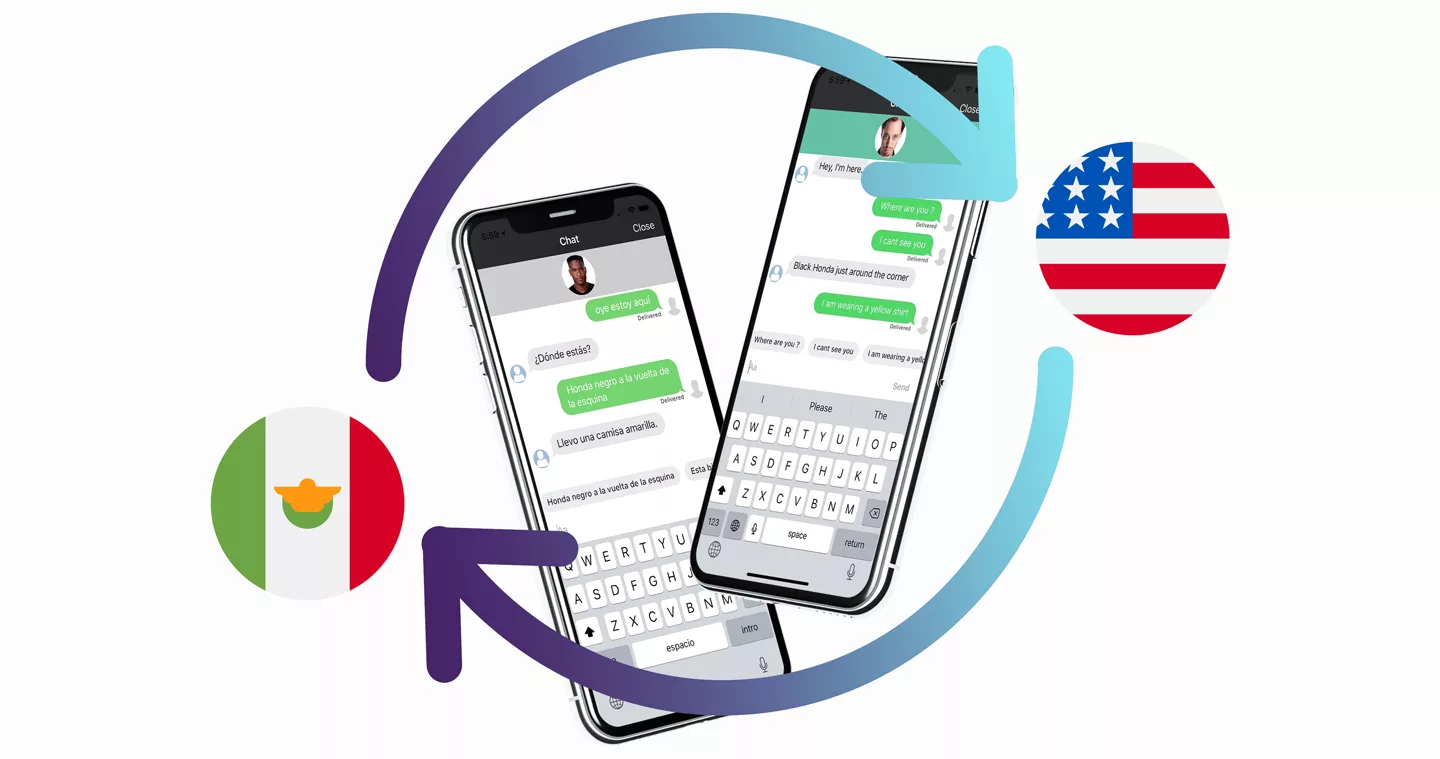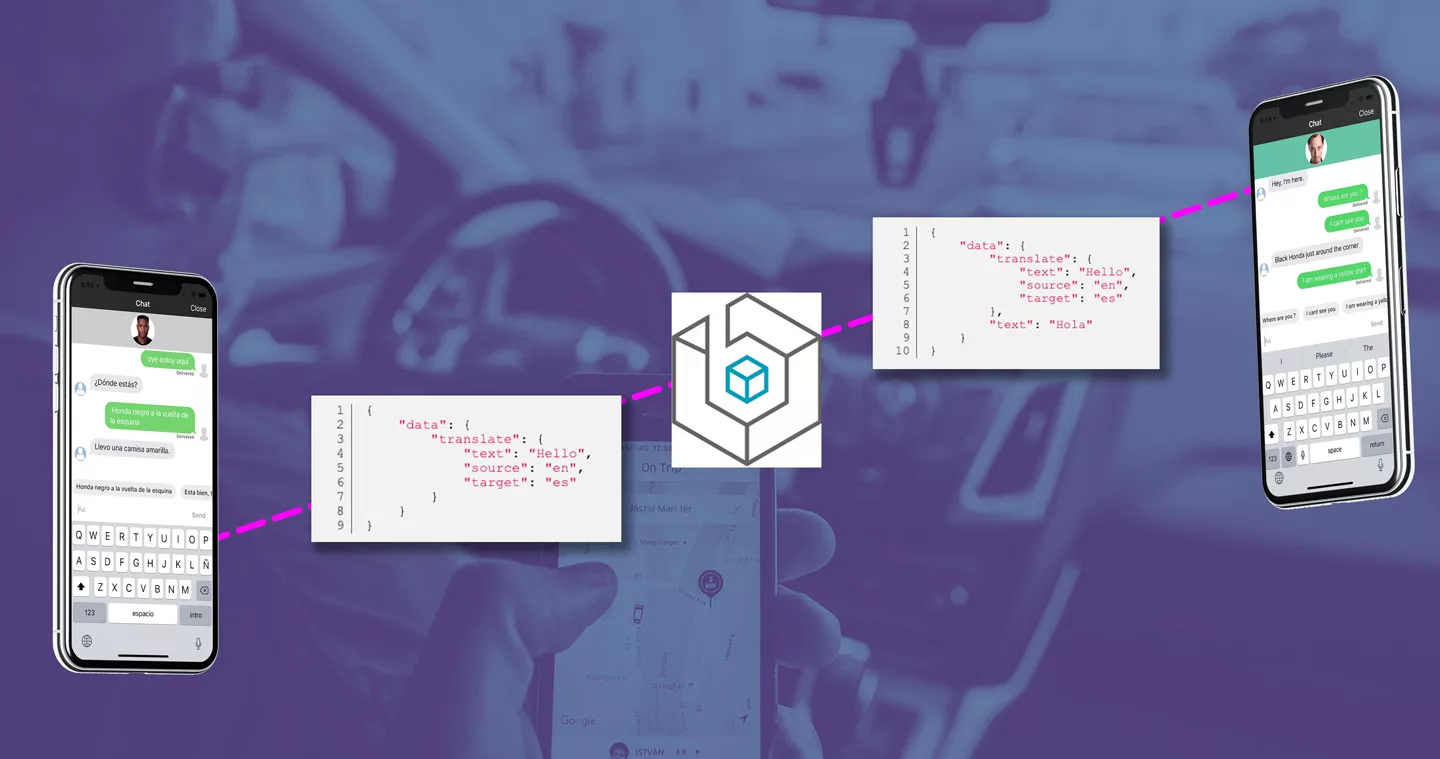Creating In-App Translation Directly In The Chat Interface
How can billion-dollar companies like Uber and Airbnb control their brand and the experience users have with their products? When those companies don’t even employ the person delivering the experience booked through their Apps?
Easy. By creating products that anticipate their user’s needs.
Features like location tracking and arrival notifications provide transparent visual cues to facilitate non-verbal communication between the user and person delivering the service. Be it a ride or a place to sleep.
So why not take that one step further and encourage 2-way active communication? Even when the parties involved don’t speak the same language.
We did just this. And injected real-time translation into our clients’ mobile apps. Enabling clear communication between everyone, even those who speak different languages.
Directly in the chat interface.
After all, it’s pretty difficult trying to interpret broken-English instructions. When you need to know how to enter the 6-digit code to get you in the building. Then walk up 2 flights of stairs, and find the 3rd identical door on the left. Just to get into your Airbnb.
Or decipher which of the 6 silver Priuses in the arrival lane is your driver.
When those instructions are chopped up and delivered in Spain-glish.
Here is a real-world scenario:
One Call, a company specializing in coordinating care for workers compensation victims has created a connected network of contracted drivers to expand non-emergency healthcare transportation.
By expanding their talent pool, One Call is also relinquishing hiring control. No longer being able to vet every driver, understand their background, and onboard them properly. They now have no clear understanding of these new drivers. And know if they speak English as a first language, or even at all.
Even if the drivers have perfect grammar, how can they guarantee that their patients have a fluent ability to type or text in English?
It’s impossible. And potentially detrimental to the success of the application.
Because the patients they transport are in need of some level of care or rehabilitation treatment. They are already overly anxious. Anxious about their recovery, loss of income from being out of work, and the stress of a doctor’s visit.
The last thing these patients need to cope with is unclear directions and messy communication.
Enter Amazon Translate. A cloud service that uses Machine Translation to convert text between different languages.
We hooked into the Amazon Translate API to localize our clients’ application and process multilingual data. Turning Spanish text on the senders’ side, into English text when delivered. And vice versa.
Creating in-app translation feature to help contracted drivers pick-up patients in need of care, with cross-lingual communication. Easing patient anxiety, increasing patient attendance, and productivity.
The Details — A Toolchain That Breaks Language Barriers
Now patients and drivers can communicate in their native language. Feeling confident that instructions will be clear and correct when delivered.
Even if the recipient speaks a separate language.
Contracted drivers are now empowered and able to provide better customer service. Because of this Machine Translation chat feature. By clearly communicating arrival information, late notifications, or any trip detail, in their native language. Where and how they are confident and comfortable communicating.
Increasing customer satisfaction, and repeat app usage.
Translate is an on-demand machine translation service that delivers fast, high-quality, and affordable language translation.
Giving developers the ability to build it directly into an application as a microservice with a simple API call.
There is also an existing Amazon Translate Block offered by PubNub. Enabling us to bring the translation service directly into our existing PubNub-powered chat running inside our clients’ app.
There is no need to reinvent the wheel.
We also have the ability to roll-out additional languages as needed. Expanding the translation services into any of the 595 offered languages with ease.
In case the appeal of pre-configured Blocks was not enough. Here is why we work with PubNub.
We’ve been leveraging PubNub within the RELAYRide product for years. In everything from geolocation tracking to real-time communication.
Because it’s insanely reliable, even at massive scale. PubNub has 15+ global data centers, replicating data. So messages always make it where they need to go.
Giving us confidence that as daily rides continued to grow, we could scale with ease. Without having to worry about adding additional servers.
Their real-time APIs include functions for bringing compute directly into the data streams.
This is actually how language translation works.
Because we are working in the healthcare space, end-to-end encryption and HIPAA-compliance is always a priority. Even though we were not too worried about sensitive data being exchanged through chat, we knew that every bit of user data would be protected with confidence.
Some ridesharing services allow riders and drivers to text each other. However, in the Healthcare space, you would need to mask both parties phone numbers for privacy.
Making translation too unwieldy to execute in real-time.
Keeping the chat and translation inside the native app limited exposure of sensitive data and low latency.
Blocks, an open-source collection of preconfigured functions that connect and utilize cloud services.
Blocks allow anyone to easily drop in the AI-powered translation service of their choice.
Be it:
- Amazon Translate
- Watson
- Microsoft Translator
Of course in this example, we chose Amazon Translate. To run directly inside PubNub chat and deliver an accurate translation in real-time.
We built the chat feature in our native iOS and Android Rider and Driver apps. Leveraging PubNub’s native SDKs.
For the real-time translation, we leveraged on the AWS Translate + PubNub Block. This Block lets both our Rider and Driver applications take full advantage of Amazon’s machine learning powered translation API.
To perform translation within PubNub’s data stream network, while in transit, making it 100% real-time.
The power of partnerships
Our on-going relationship with One Call allowed us to bring a powerful feature like this to the table. And present this in-app translation feature back to our client.
When our Product Teams walk lock-step with you, it is very common for us to conceptualize product features and realize infrastructure/cost optimization suggestions. Without you having to lift a finger.
In this example, we were able to stack existing services together and not incur any significant cost to roll out a quick and powerful POC.
An on-going partnership with PubNub validates our knowledge and expertise with their Data Stream Network. We believe that PubNub is leading the way in real-time and geolocation services. And our close working relationship allows us both to stay at the tip-of-the-spear. Building technology that is useful and excites. As an AWS Advanced Consulting Partner, we are better prepared to support our customers. And have the ability to take advantage of numerous Partner-only programs. Providing access to incentives and credits that may not always be available to the general public.
Serving global clients in local markets
Today, an App’s reputation can sink or soar with every user interaction.
Forcing companies to focus on seamless and frictionless user experiences.
So, why not do everything possible to empower employees, contracted workers, and partners by facilitating communication. And turning stressful experiences into powerful moments delivered through your product.
Through RELAYRide and this new machine translation feature, One Call now has the ability to onboard clients in any geography. Especially those like South Florida, where language variations can be quite prevalent.
Language translation opens up both new revenue streams and customers. And makes it easier to tap into new resources, like Gig Economy workers. With just a few lines of code.

